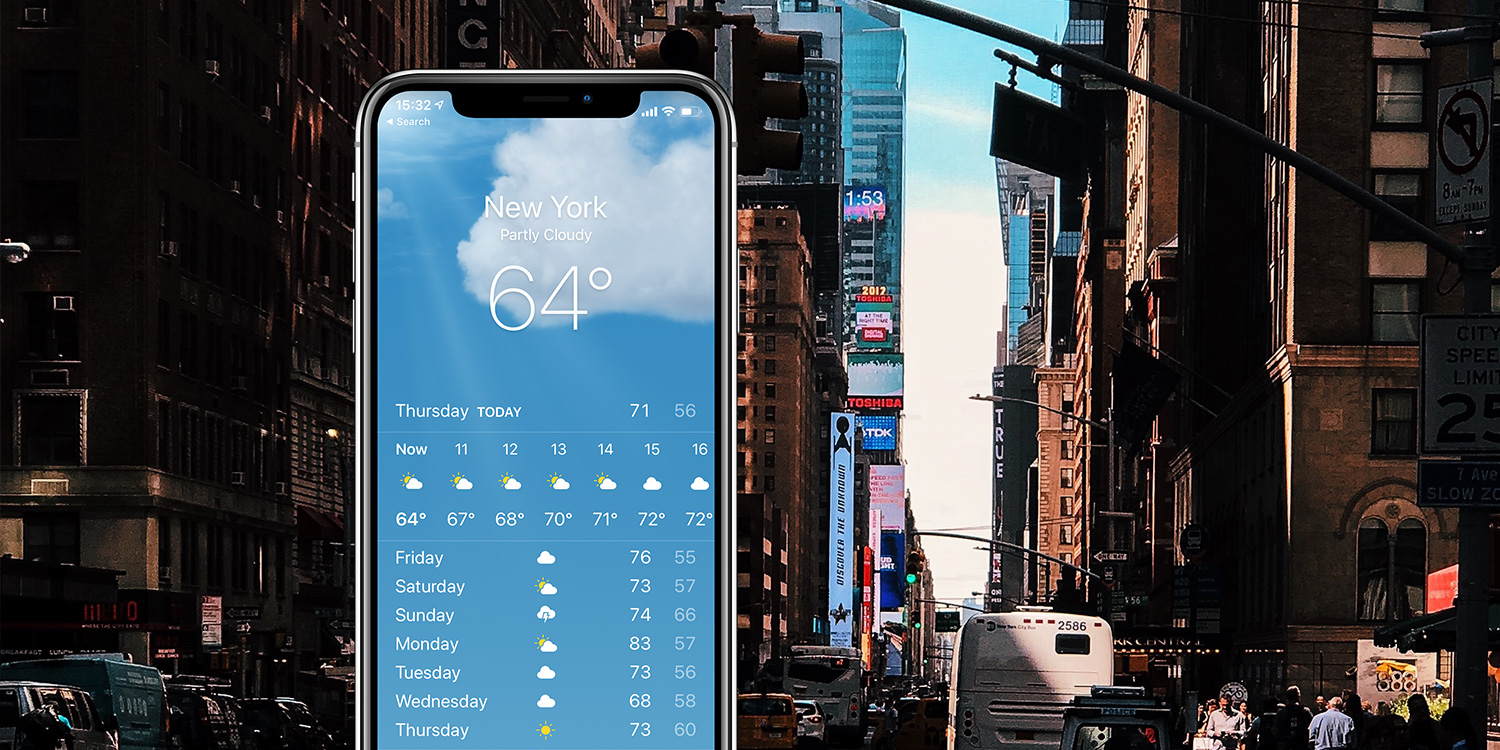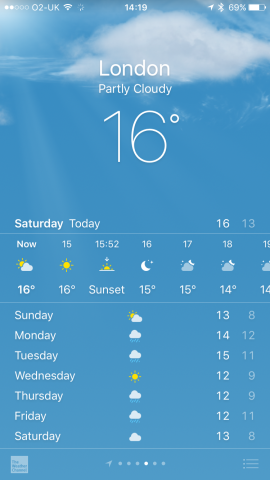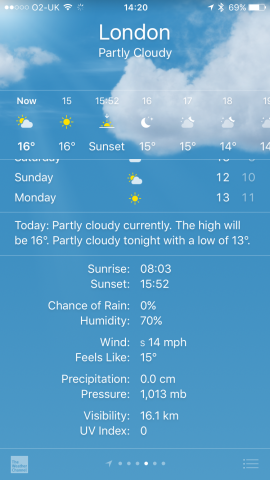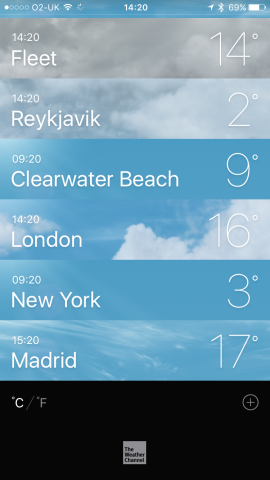There are a ton of Weather apps on the App Store, and plenty of them are excellent. But for many people, the extra detail and features of those third-party beasts are overkill – why get another app when Apple’s built-in Weather works just fine?
In truth, there are only a handful of forecasting services providing the data behind the scenes, and which is best will vary based on where in the world you live. But The Weather Channel feed that powers the iOS Weather app is pretty reliable, and the app itself is more competent than people give it credit for.
So instead of upgrading, here are a few tips to make sure you’re getting the most from your existing forecasts app.
24-hour forecasts
Weather’s interface is pretty straightforward, but you’d be surprised how many users don’t realize you can swipe the hourly forecast right-to-left to uncover a full day’s worth of weather predictions.
These are much more detailed than the day-by-day breakdown, even offering the percentage chance of rain for any given hour, and the exact minute of sunrise and sunset at your given location.
Further details
Simplicity is key in the app’s main view, but a quick swipe to scroll down the page will reveal all kinds of additional information.
Humidity and wind speed ratings will help you decide how to dress, and they both contribute to a “feels like” temperature that is often more useful than the actual temperature. Those so inclined will also find scores for pressure, visibility, UV, and even air quality.
Location, location, location
By default, the app will focus on your current location in its main view. But if you travel often, or have relatives across the globe, you can add several more cities to the app and side-swipe between them at will.
Tap the list icon in the bottom right and hit the + button to add a new location to the list. To remove an entry, swipe across it from right to left and then tap the Delete option.
Bonus: this view is also where you’ll find the toggle to switch between Fahrenheit and Celcius measurements.




